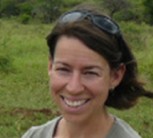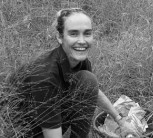The University of Pretoria (UP) recently participated in an international study led by the University of Miami to investigate termite and microbial wood discovery and decay.
“From a southern African perspective, this study shows how important termites are in the decay of wood, particularly in dry savannas,” says Professor Mark Robertson of UP’s Department of Zoology and Entomology.
Most people think termites are a nuisance that consume wood in homes and businesses – yet these termites represent less than 4% of all termite species worldwide.
Termites are critical in natural ecosystems – especially in the tropics – because they help recycle dead wood from trees. Without such “decayers”, the environment would be piled high with dead plants and animals.
But new research indicates that these energetic, wood-consuming insects could soon be moving towards the North and South poles as global temperatures rise as a result of climate change.
Extraordinary Professor Catherine Parr and PhD student Katherine Bunney were instrumental in UP’s contribution to the global study, which was published in the journal Science, particularly from the perspective of termite activity and biodiversity in the southern hemisphere. The UP team ran field experiments in a relatively wet savanna near Hoedspruit and further north in a much more arid savanna in the Nwanedi Nature Reserve, using wood blocks in decomposition bags.
“Upon returning to collect our wood decomposition bags after just six months, I was intrigued to discover that the contents of every ‘open’ bag [those allowing termite access] were almost entirely consumed,” Bunney says. “The wood blocks were hollowed out, leaving just a thin shell of wood, and were filled with termite sheeting soil and dead termites. In contrast, the closed bags were just as they had been left six months prior. Our site [Nwanedi Nature Reserve] is incredibly dry; it’s hot with a lot of bare ground. In summer, it was too hot to do much fieldwork after 9am. This is a seemingly inhospitable place, yet termite activity is so high.”
Through this study, which was led by University of Miami Professor Amy Zanne, researchers learned that termites are pivotal when it comes to breaking down wood, contributing to the earth’s carbon cycle. They also discovered that termites are significantly sensitive to temperature and rainfall; this means that as temperatures rise, the insect’s role in wood decay will likely expand beyond the tropics.
“With temperatures warming, the impact of termites on the planet could be huge,” says Prof Zanne, the Aresty Chair of Tropical Ecology in the College of Arts and Sciences’ Department of Biology.
For the study, Prof Zanne, along with more than 100 collaborators, studied locations across the globe where bacteria and fungi (microbes) and termites consume dead wood. They investigated how temperature and rainfall affected the discovery and decay of wood by using the same experimental set-up at more than 130 sites in a variety of habitats across six continents. Their results suggest that areas with high termite activity should increase as the earth becomes warmer and drier.
“Termites had their biggest effects in places like tropical savannas, seasonal forests and subtropical deserts,” Prof Zanne explains. “These systems are often underappreciated in terms of their contributions to the global carbon budget.”
The global study helped scientists to glean broader insight into wood decay, says Associate Professor Amy Austin, an ecology expert of the Universidad de Buenos Aires and a collaborator of Prof Zanne’s.
“The inclusion of arid, hot bioregions, particularly in the southern hemisphere, where termites are often plentiful and active, allowed for novel insight into their role in carbon turnover,” Prof Austin says. “As ecologists, we may need to broaden our consideration of woody ecosystems beyond a closed-canopy forest and recognise that woody carbon stores in drier ecosystems are an important component of the global carbon cycle.”
Although microbes and termites both decompose dead wood, there are important differences between them. While microbes need water to grow and consume wood, termites can function at relatively low moisture levels. In fact, termites can search for their next meal even if it is dry, and carry what they want back to their mounds; they can even move their colony into the wood they are consuming.
“Microbes are globally important when it comes to wood decay, but we have largely overlooked the role of termites in this process,” Prof Zanne says. “This means we are not accounting for the massive effect these insects could pose for future carbon cycling and interactions with climate change.”
Termites release carbon from the wood as methane and carbon dioxide, which are two of the most important greenhouse gases. Therefore, Prof Zanne says, termites may increasingly contribute to greenhouse-gas emissions with climate change.
“I am fascinated by how microbial and termite wood decay affects how carbon is being released back into the environment,” says Prof Zanne, who has been studying the feedback from wood-based carbon release for more than a decade.
Prof Zanne began her research on termites in 2008, connecting with other wood decay experts as she attended a working group in Sydney, Australia. That led to a large research project funded by the National Science Foundation and Natural Environment Research Council in Queensland, Australia, which included collaborating with artist Donna Davis to portray termites, microbes and decaying wood.
Prof Zanne expanded the study globally through social media and word of mouth, including researchers across career stages and locations, with everyone running the same experiment using locally sourced materials.
André M D'Angioli, a Brazilian biologist, collaborated on the project as part of his doctoral dissertation at Universidade Estadual de Campinas.
“Being involved in the global wood project was a major step for my research,” he says. “It was fascinating to see how the regional-scale data I collected in Brazil was related to the global patterns found in this paper.”
Prof Zanne says the chance to spearhead a global-scale research endeavour was extremely rewarding.
“This is one of the most incredible projects I’ve worked on,” she says. “It was a truly international collaboration. Our ability to better understand wood decay and parts of the carbon cycle on a global scale is now stronger because of this research.”
The study, “Termites sensitivity to temperature affects global wood decay rates”, was published in Science.
Prof Mark Robertson, Prof Catherine Parr, Katherine Bunney. Thumbnail image credit: Photos by Rebecca Clement. Artwork by Donna Davis
September 28, 2022

Professor Mark Robertson is a lecturer in the Department of Zoology and Entomology, University of Pretoria. He is interested in biological invasions, species distributions, community ecology and the role that invertebrates play in ecosystem processes.

Professor Catherine Parr has broad interests –her research combines community ecology, biodiversity conservation, disturbance ecology, ecosystem ecology and invasive species, with a particular focus on invertebrates. The driving force behind her research is a desire to understand how biodiversity is maintained and how its loss affects ecosystem structure and function. Apart from loving ecology, she has a particular fondness for Marmite, cricket, Tintin, and bright blue skies.

Katherine Bunney is a PhD candidate at the Department of Zoology and Entomology at the University of Pretoria. Her study looks at the functional role of termites in savanna ecosystems.
 Story
Story
University of Pretoria (UP) researchers have found that the antioxidant content of certain types of tea can be likened to that found in recommended portions of fruit and vegetables.
 Infographic
Infographic
Half a cup of black tea, oolong tea or green tea contained the same amount of antioxidants with radical scavenging capabilities (RSC) as that of a 200mg vitamin C tablet.
 Story
Story
Researchers at the University of Pretoria (UP) may have identified the gene that is responsible for diet-related obesity. By exploring the role of the novel gene Slc7a8, they have made a potential breakthrough in current knowledge about the cellular mechanisms that drive fat accumulation. This understanding is crucial in developing effective treatments.
Copyright © University of Pretoria 2025. All rights reserved.
Get Social With Us
Download the UP Mobile App